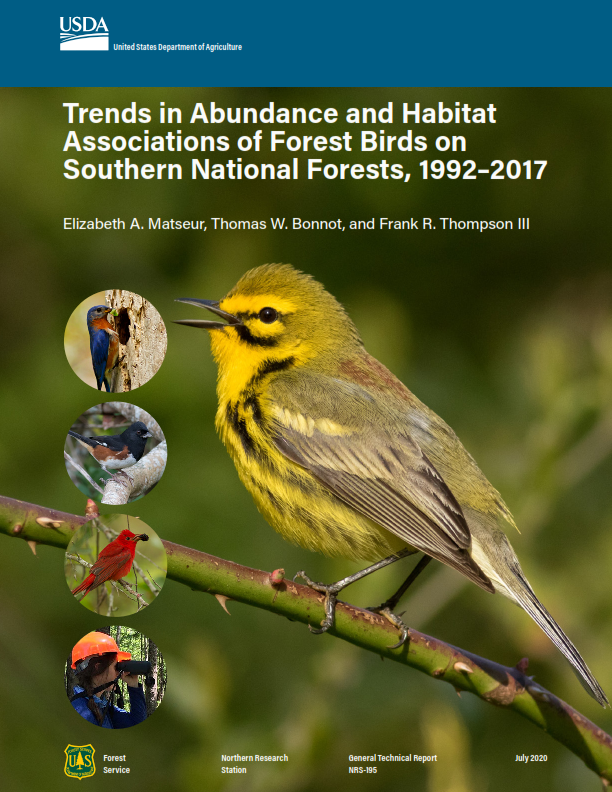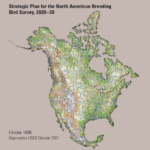The USDA Forest Service just released the “Trends in Abundance and Habitat Associations of Forest Birds on Southern National Forests, 1992-2017”, where they compile 25 years of bird survey data into trends in bird populations over the region and by state.
Abstract
The USDA Forest Service has a legislative mandate to maintain species and community diversity on National Forest System lands and uses monitoring to determine whether national forests are meeting this goal. The Southern Region of the Forest Service adopted the Southern National Forest’s Migrant and Resident Landbird Conservation Strategy in 1996 to address conservation concerns arising from long-term population declines in many birds. The strategy implemented a regionwide program to improve monitoring, research, and management of avian populations and their habitats. Monitoring is conducted by 10-minute point counts from early April to late June across 15 national forest units. Our objective was to analyze 26 years of monitoring data collected by this program from 1992 through 2017 to assess population trends and habitat associations of birds. We used time-removal models within a hierarchical Bayesian model framework to estimate species abundance by year, population trends, and abundance related to forest type and successional class. There were 82,367 point counts completed and 1,104,423 birds detected. We determined population trends for a total of 152 species and between 58 and 117 species per national forest. Seventy-five species had a majority of positive annual trends and 68 species had a majority of negative annual trends across all national forests. We estimated abundance in relation to forest type and successional class for 101 individual bird species. Thirteen species generally had greater abundances in late-successional classes and 29 species in early-successional classes. Twentyone species were generally more abundant in specific forest types, and abundances of 38 species were more mixed or variable among forest types. This represents the first comprehensive effort to analyze this 26-year dataset, and these results can help inform management and conservation of migrant and resident birds in the Southern Region. We suggest that additional analyses are possible to investigate causal factors for the patterns reported here and further inform management efforts.



